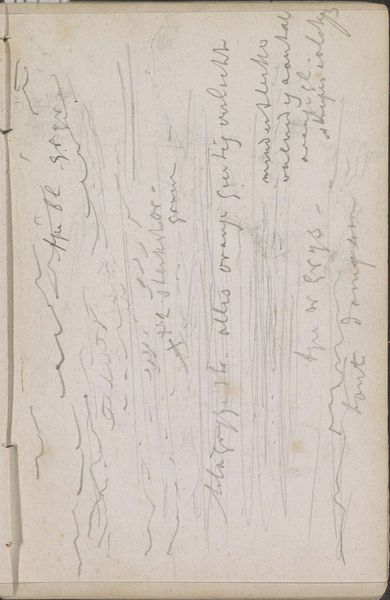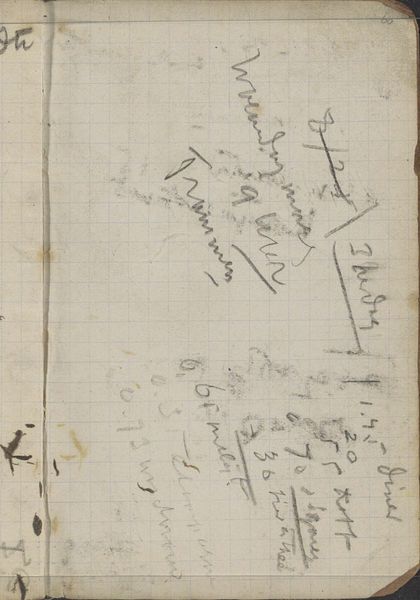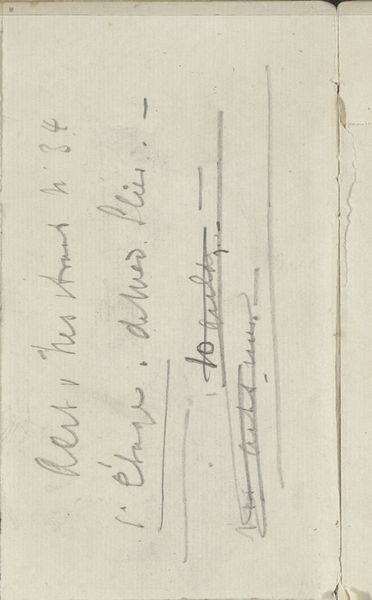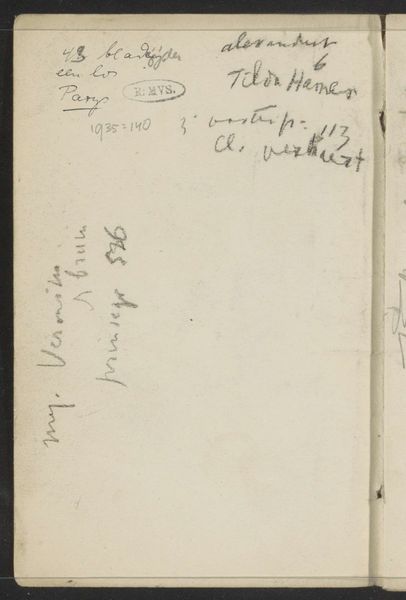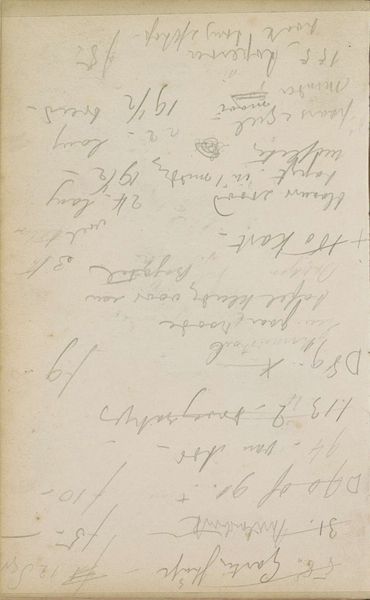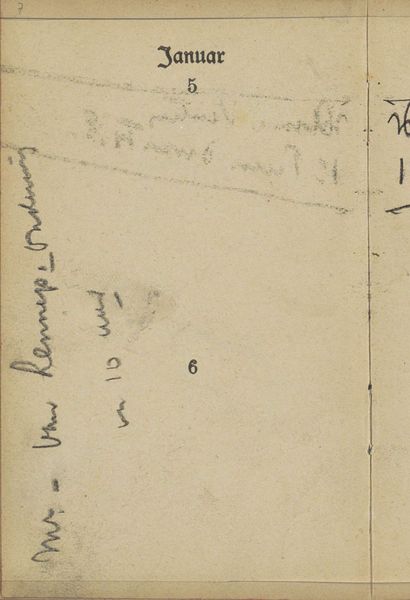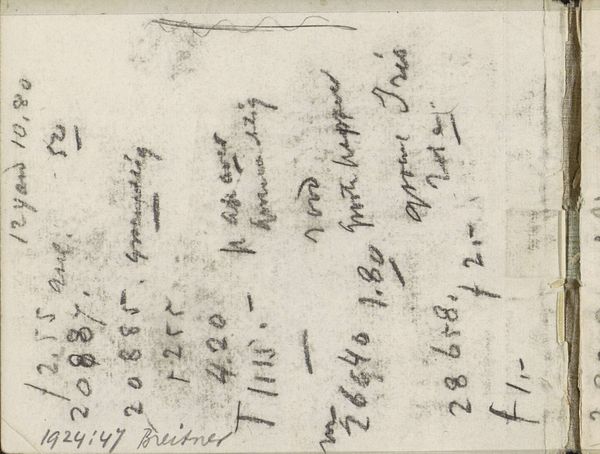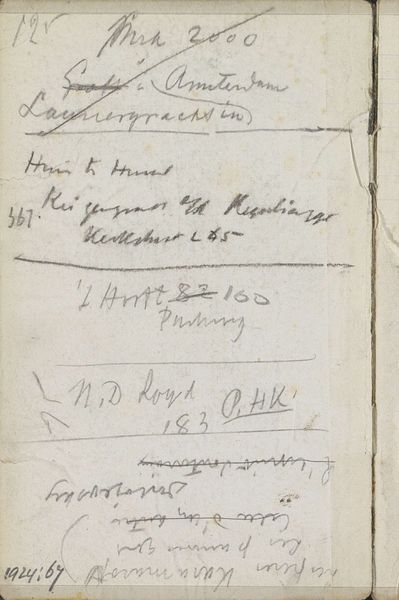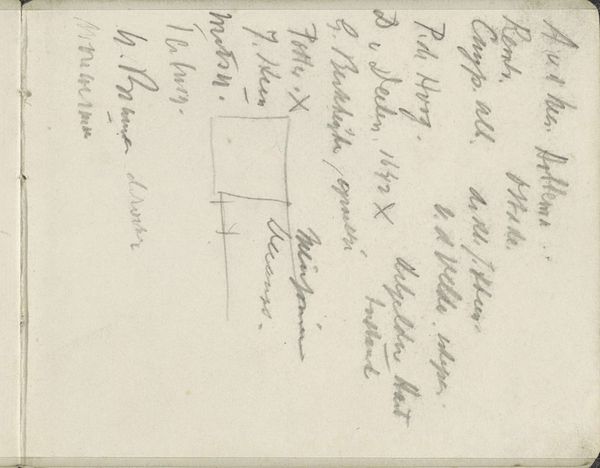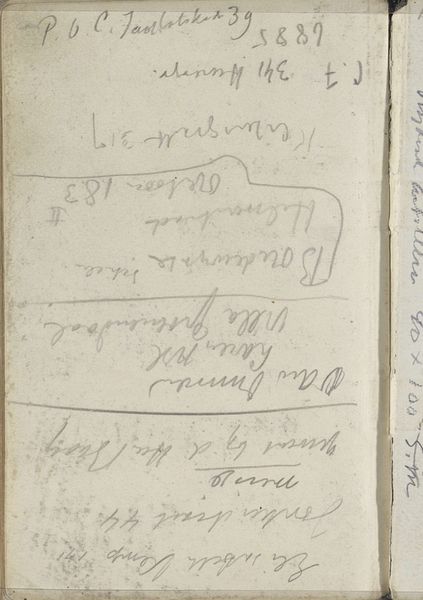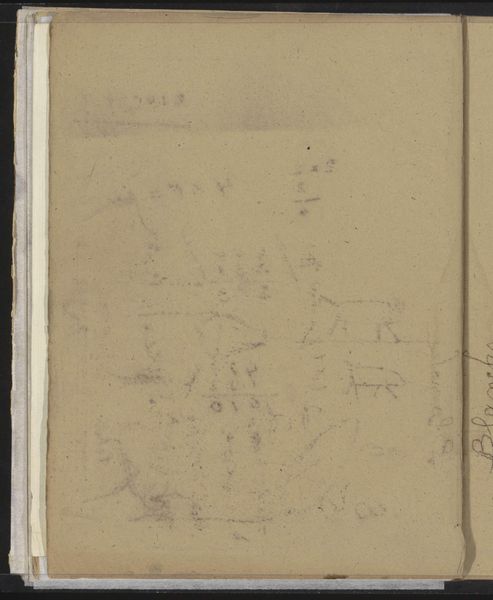
drawing, graphic-art, paper, dry-media, pencil
#
portrait
#
drawing
#
graphic-art
#
hand-lettering
#
hand drawn type
#
hand lettering
#
paper
#
dry-media
#
personal sketchbook
#
hand-drawn typeface
#
ink drawing experimentation
#
pen-ink sketch
#
pencil
#
pen work
#
sketchbook drawing
#
sketchbook art
Copyright: Rijks Museum: Open Domain
Editor: This is a fascinating sketch, titled "Aantekeningen uit archief Philip Zilcken," dating from 1867 to 1930. It appears to be pencil and ink on paper, and it looks like handwriting. What I find most striking is its intimacy—like a private glimpse into the artist’s thought process. What do you see in this piece? Curator: This piece operates as a powerful form of visual language. Think about the politics of handwriting itself, its accessibility historically, and who was afforded the luxury of literacy and documentation. Here we see not just information, but the hand of Philip Zilcken, participating in and shaping the cultural narrative of his time. Editor: So, the medium itself speaks to certain societal structures? Curator: Exactly. Who was allowed to write, what was deemed worthy of recording, whose stories were told? The "archive" in the title prompts us to consider whose voices are amplified within historical records and, conversely, whose are silenced. What can handwriting tell us that official portraits might conceal? What do you think Zilcken was hoping to express? Editor: Maybe something about a particular experience, the sketch feels rather spontaneous. The fact it's handwriting as opposed to something that’s printed makes me think about the individual instead of the masses. Curator: Precisely. We must recognize the ways even seemingly innocuous sketches reflect larger power dynamics and invite critical engagement with our historical understanding. How does art history challenge us to interrogate those dynamics? Editor: That’s an interesting perspective; I didn't consider handwriting itself having political undertones, but I understand the value in approaching archival material this way. Thanks! Curator: And thank you, it's important to continue asking these critical questions. Looking at art with an eye on intersectional and societal relationships, such as access to literacy and education, helps decolonize traditional, and often exclusionary art histories.
Comments
No comments
Be the first to comment and join the conversation on the ultimate creative platform.
